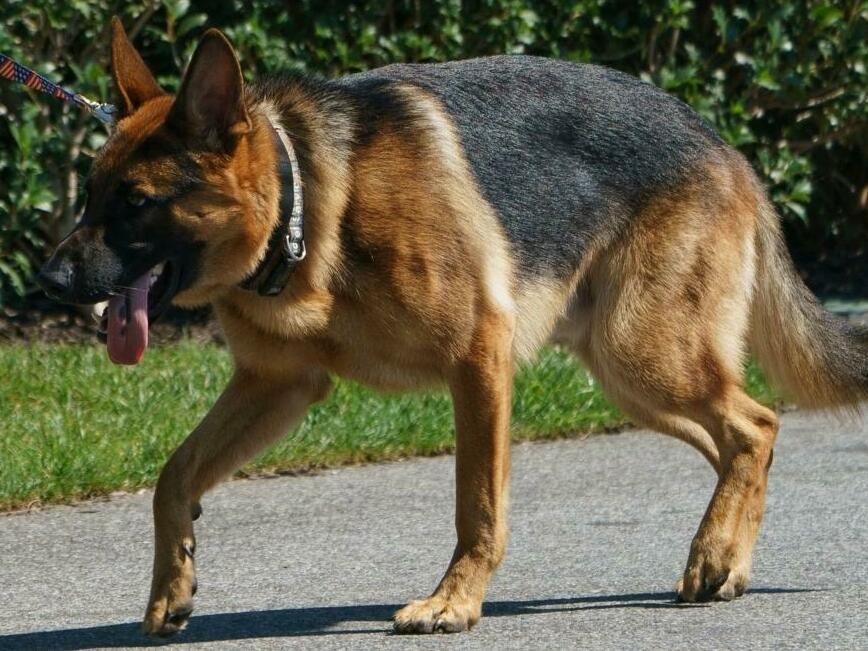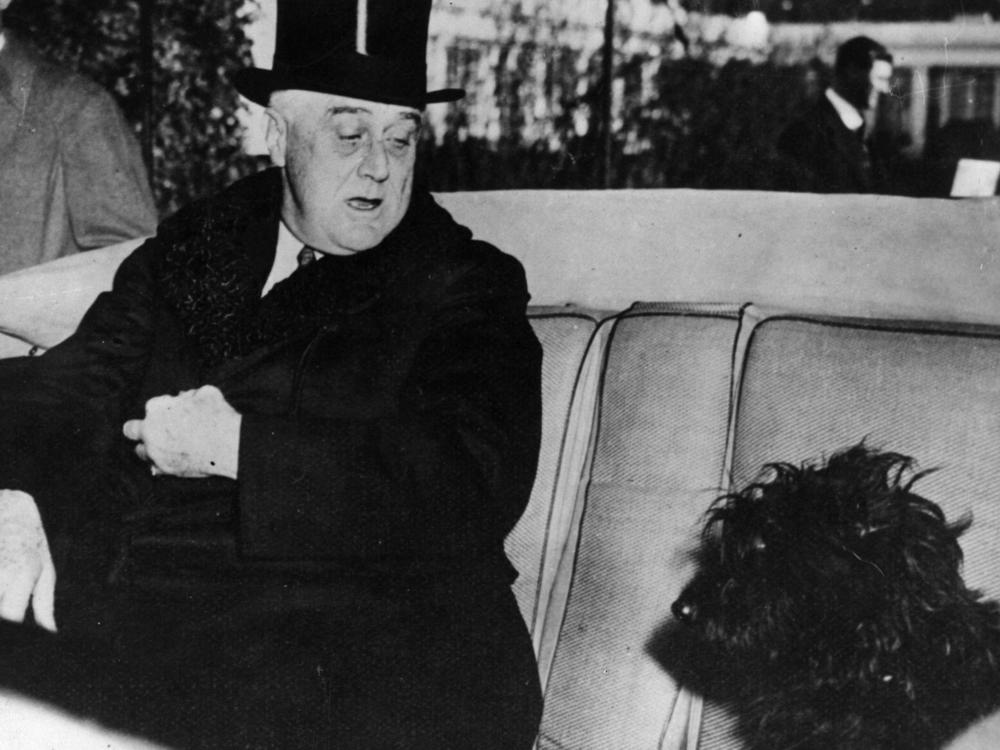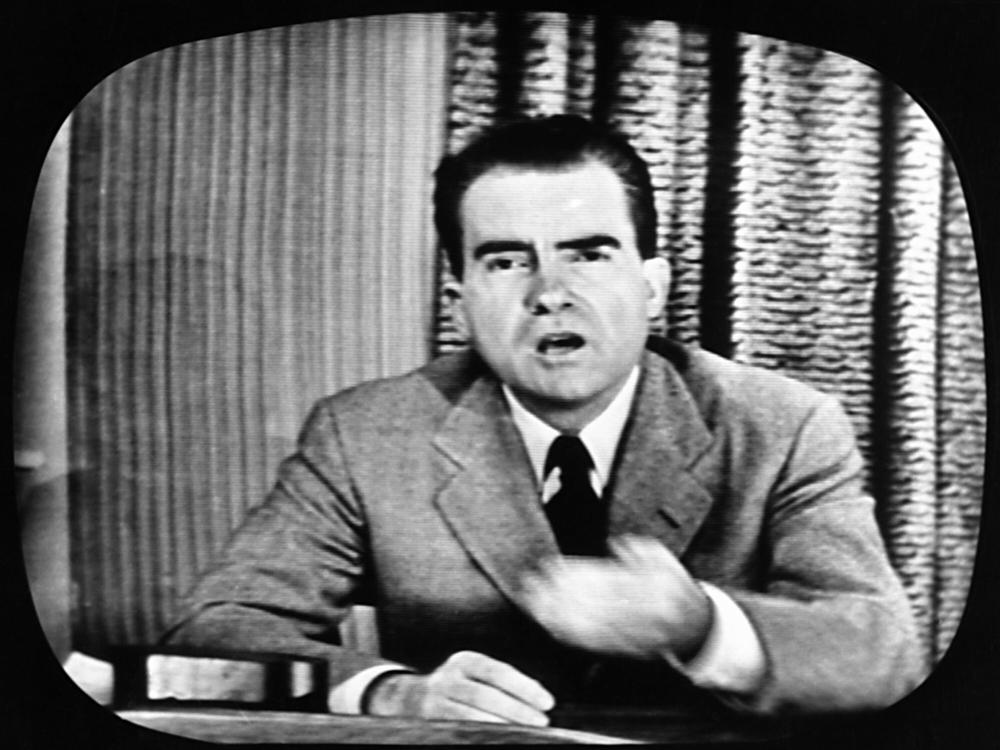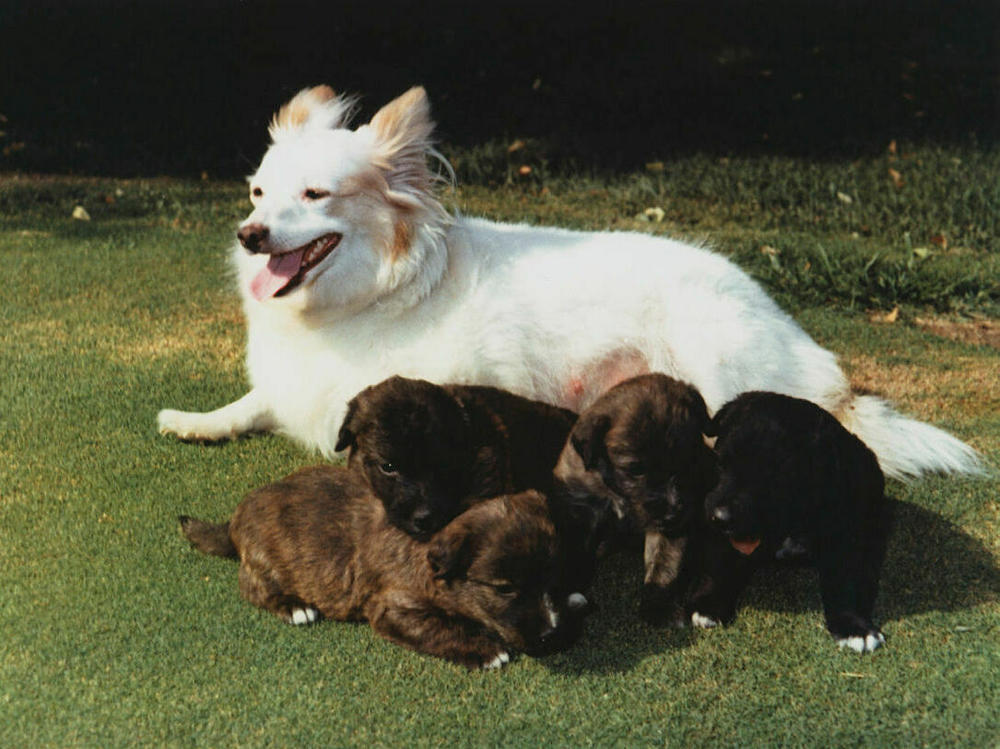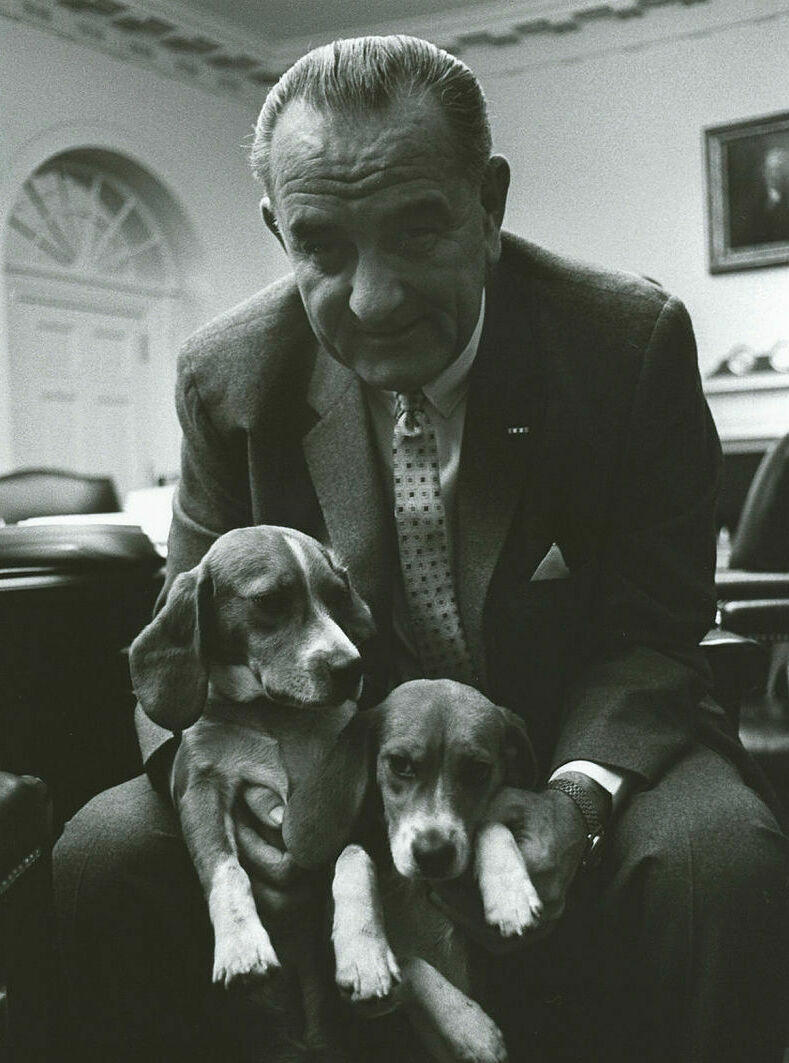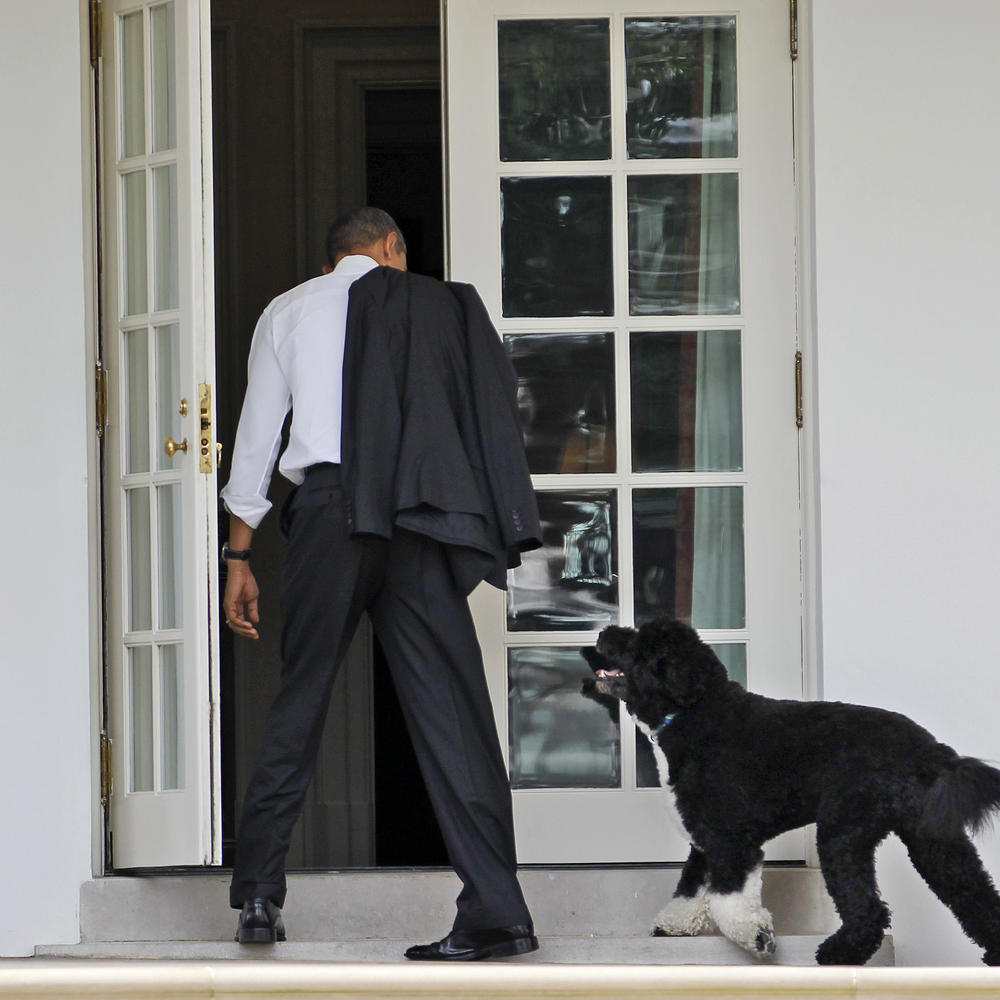Section Branding
Header Content
Presidential pets can breed controversy. A dog was once suspected of being a spy
Primary Content
News that another of President Biden's German shepherds has been transferred from the White House to the proverbial doghouse brings to mind a veritable menagerie of first pets that have graced 1600 Pennsylvania Ave.
Since President George Washington, the White House has been home to cats, birds, and a variety of more exotic animals. Some have been immortalized in speeches, while others have found themselves at the center of controversy, with one even suspected of espionage!
Van Buren wanted to keep tiger cubs. Congress said no
President Martin Van Buren was on the receiving end of a pair of tiger cubs originally gifted to his predecessor, Andrew Jackson, by the Sultan of Oman. By the time they arrived in Washington, D.C., Van Buren was president and adamant about keeping the animals. But Congress insisted the cubs were the property of the U.S. government, not the chief executive, according to a National Park Service account.
"In the end, the President lost his argument with Congress and gave the tiger cubs to a zoo," the park service says.
Presidents Calvin Coolidge and Teddy Roosevelt each kept a strange collection of animals. Coolidge was gifted a pygmy hippo named Billy but sent it to the National Zoo.
Roosevelt, an avid outdoorsman, had the largest and most eclectic and exotic mix of pets, ranging from a badger to a hyena, as well as myriad farm animals. But it was a bulldog named Pete who proved to be trouble at the White House. Pete was "sent packing" after he "bit the French Ambassador Jean Jules Jusserand, who was a good personal friend of the president's," according to the Theodore Roosevelt Center.
For the Bidens, the kerfuffle over Commander is familiar ground. In the first months of the administration, another of the first family's dogs, Major, was sent to Delaware to live after biting security personnel.
In an odd historical parallel, President Franklin D. Roosevelt's German shepherd, also named Major, met a fate similar to Biden's dog.
Andrew Hager, historian-in-residence at the Presidential Pet Museum, says FDR's Major had to be rehomed after "[tearing] the pants of the British prime minister at the first state dinner Roosevelt gave in 1933."
There may be a lesson here: If you want a friend in Washington, get a dog. Just don't name him Major.
FDR's "Fala" speech turned fake news into humor
But it is FDR's Scottish terrier, Fala, who has earned an enduring place in history. In 1944, Roosevelt's opponents floated a story that Fala had been inadvertently left behind after the president visited Alaska aboard a U.S. Navy destroyer. To retrieve the dog, "they had to turn the destroyer around and go back at a cost of several million dollars and at a risk to everybody," Hager says, relating the tale.
There is no evidence that it ever happened, but Roosevelt, a Democrat, used the story in a 1944 campaign speech to fire back at Republicans, who he said were no longer content with mere attacks "on me, or on my wife or on my sons."
"They now include my little dog Fala," the president said to laughter.
"It really sort of put the issue to rest," says Hager, who is also the author of All-American Dogs: A History of Presidential Pets from Every Era.
Nixon's dog and the speech that may have saved his political career
Richard Nixon may owe his political career to a black-and-white cocker spaniel named Checkers. The story dates not to his time in the White House, but to the 1952 campaign, when he was then-presidential candidate Dwight Eisenhower's running mate.
A potential scandal involving an alleged Nixon secret political war chest was brewing and threatened to force Eisenhower to ax him from the ticket.
In a televised speech, Nixon countered critics, acknowledging that what he had done "was wrong, just not illegal." One gift he'd received from a supporter, he said, was a dog, Checkers. Taking a page from FDR, Nixon invoked his family — and the family pet — for political points. The dog, he said, had been named by his 6-year-old daughter, Tricia.
"And, you know, the kids, like all kids, loved the dog, and I just want to say this, right now, that regardless of what they say about it, we are going to keep it," Nixon said.
The "Checkers speech" is widely regarded as having rescued Nixon from political oblivion.
Some thought Kennedy's Cold War canine could be a spy
During the Cold War intrigue of the 1960s, Soviet leader Nikita Khrushchev gave President John F. Kennedy a small mixed-breed dog from the litter of Strelka, one of two Russian mutts to have flown into space and returned safely. Pushinka ("fluffy" in Russian) arrived in Washington, D.C., only to be whisked off to Walter Reed Army Medical Center to be poked, prodded and X-rayed by the Central Intelligence Agency.
"People thought it was a spy," says Jennifer Pickens, a White House historian and first lady expert who also has written a book on presidential pets.
"After a whole bunch of tests for bombs and germs and other listening devices ... [Pushinka] went on to fall in love with President Kennedy's beloved terrier, Charlie, and had puppies that were coined pupniks," she says.
Kennedy's successor, President Lyndon Johnson, infamously caught flak for a photograph that showed him picking up one of his beagles by the ears, apparently to encourage him to bark for guests.
When the photo appeared in Life magazine, "the public reaction was swift and vehement. In letters and phone calls to the White House, in newspaper editorials, on TV and radio talk shows, LBJ was denounced for animal cruelty," according to the American Kennel Club.
But Pickens argues that it was overblown.
"President Johnson was one of the greatest animal lovers of all times, especially dog lovers," she says. "He loved those beagles. I think that was just a sad mishap of the media kind of going crazy over a moment."
Hager attributes the episode to an old Texas hunting tradition that "didn't translate outside of rural west Texas or outside of that hunting community."
Fast forward to the 1990s. Bill Clinton is president, and the first family's black and white domestic shorthaired cat, Socks, is a feline icon. In the midst of a bitter partisan divide, Socks very briefly got caught up in it all. The cat was receiving so much fan mail that Indiana Republican Rep. Dan Burton requested data on how much it cost the White House to process the correspondence.
Finally, there was the kerfuffle over President Barack Obama's Portuguese water dog, Bo. During the campaign, the Obamas said they had promised their daughters, Sasha and Malia, they would get a dog after the election. They "repeatedly said they wanted it to be a rescued dog such as one from a shelter," The Associated Press said.
However, "Their search was complicated by daughter Malia's allergies, which would rule out many of the 'mutts' the president has said he would prefer," according to the AP.
Sen. Edward Kennedy and his wife, Victoria, recommended a Portuguese water dog, a breed with a reputation for being hypoallergenic. Bo came from a Massachusetts breeder after the dog was returned by its first owner.
Technically a rescue? "He's in a gray area," the AP quoted then-chief executive of The Humane Society of the United States Wayne Pacelle as saying. Bo is a "quasi-rescue dog," he said.
"But I will say that many animal advocates are disappointed that he (Obama) didn't go to a shelter or breed rescue group," Pacelle said.
Sunny, another Portuguese water dog adopted later in the Obama presidency, also had a biting incident involving an 18-year-old family friend, leaving "a nasty gash under the girl's eye," according to TMZ.
Despite the occasional controversies, pets more often than not are viewed as a positive in the White House, says Pickens.
"We're a nation of dog lovers and cat lovers," she says. Owning one "humanizes the president to a great degree."
But as any pet owner knows, there are good days and bad days. So too for the chief executive. Hager says history shows that the positive image a pet brings to a president can easily backfire and "come back to bite you."
Copyright 2023 NPR. To see more, visit https://www.npr.org.
